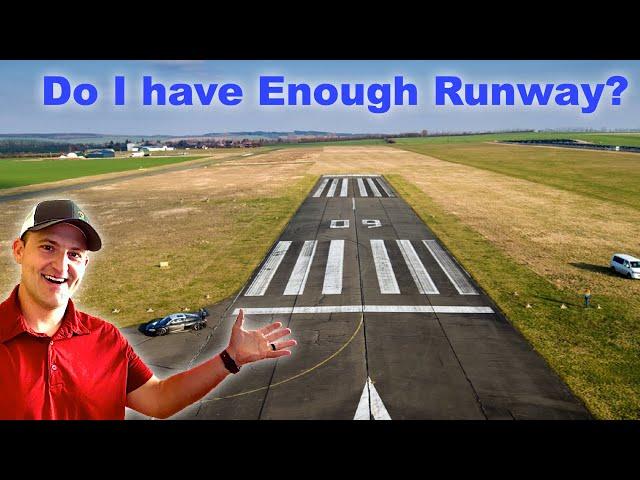
Aircraft Performance EXPLAINED (PPL Lesson 51)
Комментарии:

You Have to Hold the Nose UP for Longer.
Ответить
Soft Field Landing
Ответить
I would love to train with this you. I have learned so much from these videos.
Ответить
The story of icarus apply to pilots alot eh, fly to high toward the sun and you will lose your wing and die 💀💀
Ответить
Man you really help me understand all about performance with your rule of thumb the 4h´s
Have a good flights!

You explain things better than anything I have seen online or in books, very much appreciated!
Ответить
I've watched quite a few videos on this subject but this is the first one that actually "clicked" for me. Thank you!!!
Ответить
Thank you for your time to explain these things.
Ответить
This is your best video yet! Do you have any discount codes for your merch? $70 is just a little bit too much for a frugal flyer me to pay for a hoodie and a hat. Anything helps 🙏🏼
Ответить
Thx Josh for all the cool videos and lessons
Ответить
Explained very well!
Ответить
thanks for these vids and i love that you said a summary at the end since this is all verry complicated for people like me that are new to aviation
Ответить
10% for each 9 knots, but what if i have, say, 15 knots or 5 knots?
Ответить
Strictly for American. Talk fast and use weird words.
Ответить
Best video out there thank you
Ответить
Appreciate the effort you put into this
Ответить
WOW !! That was a great video!! I really enjoyed all the ties of each component together and how they affect each other ! Not gonna lie I will need to watch this a few times :) Great Job !!
Ответить
very comprehensive tutorial on a very important subject
Ответить
How do we set for 75% power at different altitudes on steam gages only?
Ответить
I just love these videos.... How do you determine whether you add or subtract the conversion factor from the field elevation?
Ответить
The aeronautic family try in many ways to make things safer, but in this instance of using the term "higher density altitude" where as you climb higher the air is thinner and therefore less dense. Seems to me the authorities that allow a confusing term to exist seems it is the authorities are the ones who are dense. Should be an overhaul of the terminology.
Ответить
Thanks for that clock method...I've been flying since 2000 1st I'm hearing about this method. I'm pretty good at guestimating calculations but this is very useful
Ответить
I am glad I came across your channel, I am 20y Current VFR pilot, and it So nice to hear all that again.. I will probably watch them all
Ответить
In USA we dont use the metric system. ??? What country are you from?. Everyone knows the communist country are trying constantly to change our standard system !! Even though our system ( americans) have a more accurate outcome. I have seen your system introduced into American pilots causing fatalities. Because one or the other is using the American(standard) System and the other using what most communist countries use. Are you teaching American or others.? Is that why its free??
Ответить
Right at the beginning you correctly say ISA sea level temperature is DEFINED as 15°C
What you don't say is that the temperature lapse is also DEFINED as - 6.5 °C per 1000 meters elevation change , not pressure measured altitude .
When in reality the temperature distribution with altitude differs from this CONSTANT -6.5 °C lapse , the altitude measured with an altimeter setting of 29.92 inches or 1013.25 hektopascals, the new name for millibars, then the indicated altitude is different from elevation, true altittude in feet. Example there is an inversion in temprature, meaning it gets warmer across that inversion, then the altimeter will show a significantly HIGHER altitude: The surrounding terrain is higher. Yes that has led to controlled flight into terrain.

It is generally bad practice to round or try to add safety margin by padding steps within a calculation. (This applies to many subjects, not just aviation.) Unfortunately I see this a lot in the CFI world in an erroneous, though well intended, attempt at improving safety.
Do the calculation to the best availible accuracy, then determine how much safety buffer you want to add at the end. Rounding up and adding margins at intermediate points just increases the uncertainty of the calculation leaving you with an arbitrary unkown amount of buffer.
To be clear, I am talking about the proccess of calculation and use of tables. If you know your inputs have a range (margin of error in the measurment) then it is ok to do the calculations using the conservative side of those inputs. This input selection is different from fudging the actual calculation or chart-reading process.
Same goes for fuel calculations, eta, weather, weight and balance. Do the most accurate calculation you can then add in adjustments for specific factors and finally add the safety margin.

OHJ MAN ! U SHOULD HAVE BEEN MY FLT INSTRUCTOR GOOD JOB
Ответить
With all due respect, both the engine and the airplane perfom based on density , in other words DENSITY altitude , where the temperature has a significant effect
Lift = ½ density × TAS² × area × Cl
Cl = lift coefficient = AOA × dcl/da
Cl = AOA × 0,1047 × AR/(AR + 2)
AR = wing aspect ratio = span²/area
now density = press / (R × Tabs)
R = 8314 /29 Joule/ kg K
The engine power is also proportional to density
at any pressure altitude cold air is denser than hot air.
The designation density altitude takes that into effect.
The airplane performs according to Calibrated air speed.
As you did say .
sea level density × CAS² = dens × TAS²
TAS = CAS × √ (SL dens/ dens)

Great job
Ответить
Obviously, a very good flight instructor - well done, and thank you.
Ответить
Hey, this is some excellent content
Ответить
Base leg 1.4xVSO and final 1.3xVSO. Most instructors teach well above that. A C-172 can be landed at 52 kts with full flaps but just about all CFI’s want you at 60-65 kts for safety. Remember control speed with pitch and decent speed with power. I reduce my power to idle as the plane settles, makes a much smoother touchdown.
Ответить
Excellent!
Ответить
I just hang around until another airplane kinda like mine takes off and if he doesn't crash I figure I'm good to go.
Ответить
Very informative video! Would it be possible for you to add chapters in future videos? It makes it a little easier if I want to turn back and find something in your videos to use for studying PPL theory :)
Ответить
Question! I came here to see your recommendations for calculating take off distances using normal procedures, since the Cessna 172 POH does not provide a chart for that. Foreflight offers a Safety Distance Factor so I can use that to help the calculations. You recommend doubling the take off distance, and I agree, but you throw in the caveat that "if you're below these numbers, I recommend you use the short field takeoff procedures just in case." I just wanted to clarify which numbers you're talking about being below? Do you mean if you double the takeoff distance and the runway is shorter than that distance? Thank you in advance!
Ответить
This video and your series would've saved me a lot going through this in college right now, I have my written in a month, this is truly well explained. Thank you!
Ответить
Awesome video as always, Josh!
Ответить
Excellent training video.
Ответить
Another great video with excellent info!
Ответить
Thanks for these great lessons!!
Ответить
Bedankt
Ответить
This was just wonderful ,thnak you so much for your time spending and nice presentation,well done
Ответить
💯 🙌🏼
Ответить
620foot paved runway. Is there real? Where?
Ответить

























